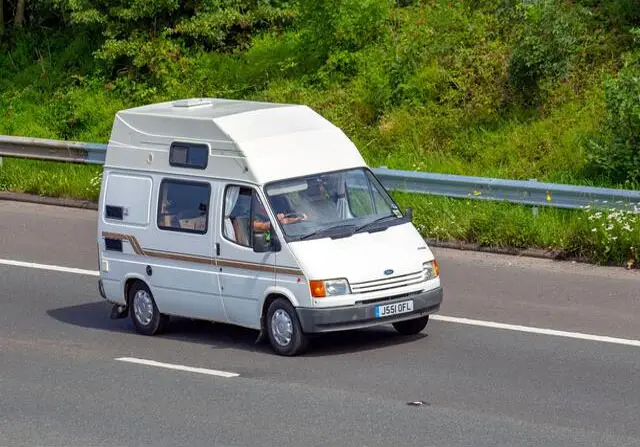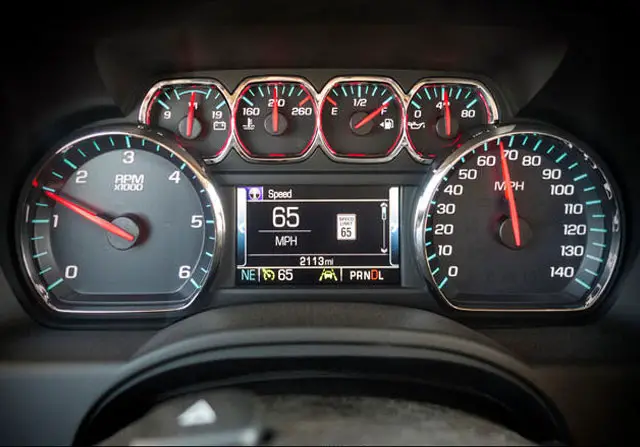Hi-van is supported by its audience. When you purchase using our links, we may earn an affiliate commission (no added cost to you). Learn more
Many highways impose rules regarding speed limits and lanes for semi-trucks and large vehicles towing a designated weight. So, are campervans allowed in the fast lane?
Campervans are allowed in the fast lane, but they can be pulled over by a highway patrol officer if they’re going too slow. However, the laws may vary if you’re towing another vehicle. Look for highway signs to know if you can’t go beyond a set speed limit (usually 55 miles per hour in most states).
In this article, we’ll discuss whether or not you should bring your campervan into the fast lane, if they’re free to cruise in the carpool lane, and how fast you can drive a campervan. We’ll also show you a few tips to stay within the law without upsetting other drivers.

Can motorhomes drive in the fast lane?
In many regions, motorhomes are subject to the same traffic laws as other vehicles, which means they can drive in the fast lane. However, there are a few considerations to keep in mind.
You can drive campervans in the fast lane as long as you don’t slow the traffic below the speed limit. For example, if the limit is 70 miles per hour and you’re driving 55 miles per hour, you’ll likely anger drivers and potentially get pulled over by a law enforcement officer to bring the traffic speed back to normal.
Here’s what you should know about driving a campervan in the fast lane:
- Some states impose limits on trucks and vans if they’re too big or heavy. If you’ve never visited the states you want to drive through, it’s best to look up the local laws. These limitations might mean you can’t go in the far left lane or prevent you from going as fast as everyone else on the road.
- You can use the fast lane as a passing lane, then return to the right lanes to let everyone pass. Most motorhome owners only pass semi-trucks. There’s usually no need to use the fast lane in a campervan since you’ll likely be one of the slower vehicles on the road.
- If you’re towing another vehicle, look for highway signs about towing vehicle speed limits. Go Downsize provides a helpful list of all the states in the US that impose towing speed limits. Refer to the list or research their towing limits if you want to bring your campervan to local campgrounds and parks while towing a trailer.
- Use common courtesy to know if driving in the fast lane is a good idea. Even if you’re allowed to use the fast lane, it’s not always a good idea. Open highways mean a lot of people will want to hit the maximum speed limit (or go faster), which your campervan likely isn’t capable of.
- Safety: Drivers should always consider the safety of themselves and others. If driving a motorhome in the fast lane could potentially impede traffic flow or cause safety issues due to size, it is better to avoid it.
Keep these four points in mind when you bring your campervan into the fast lane. While there aren’t always laws forbidding you from cruising in the left lanes, you might run into a handful of angry drivers who don’t want to stay behind a slow motorhome.
Are Campervans Allowed in the Carpool Lane?
Campervans are allowed in the carpool lane if you have two or more people in the vehicle. Much like all other vehicles on the road, campervans can’t drive in the carpool lane if they only have a driver and nobody else. Treat the carpool lane like a fast lane and drive the local speed limit to keep traffic moving at a reliable pace.
There are two things you should keep in mind when carpooling with a campervan:
- Some states don’t let you drive a campervan if you’re towing or can’t go faster than 55 miles per hour. According to The Press-Enterprise, these states ban heavyweight, towing trucks, trailers, and motorhomes from using the HOV lane (also known as the carpool lane). Using these lanes will lead to a ticket.
- Carpool lanes are often used as fast lanes to escape the trickling traffic in metropolises and surrounding areas. Don’t use these lanes with your campervan if you can’t keep the pace of the fastest speed limit in the area. There’s no point in slowing down the rest of the traffic, so it’s best to stick to the slow lanes.
Using the HOV lane is tempting for any driver, especially if they have a big campervan and a long drive ahead of them. It’s perfectly fine to use the carpool lane if there aren’t too many drivers on the road, or you can keep up with the speed limit the whole time. That being said, remember to look for the state’s rules and regulations.
Related Articles:
– Can you drive an RV with windows open?
How Fast Can You Drive a Campervan?

You can drive a campervan at the speed limit unless there are signs that state otherwise. Some roads limit vehicles that are over a certain weight, towing limit, or wheel count.
In most places, this limit is 55 miles per hour. However, it’s best to look for the signs rather than assuming you can drive the speed limit with a heavyweight vehicle.
Motor Biscuit claims some states have rules preventing all motorhomes from exceeding 65 to 70 miles per hour. Regardless of its weight or if you’re towing, you need to abide by these regulations. Failure to do so will ruin your road trip with a ticket or a license suspension.
Another issue is that some manufacturers limit their motorhomes from going too fast for safety purposes. The good news is that almost all of these limitations are placed on extra-large Class A and Class C RVs, so you likely won’t have to deal with it if you’re driving a Class B. Nevertheless, it’s worth finding out before buying the vehicle.
Conclusion
Now that you know how fast to drive your campervan, where you’re allowed to drive it, and how to look for speed signs, you can stay within the law. Campervans are typically the least limited motorhomes on the road because they’re smaller, lighter, and easier to drive than Class A and Class C RVs.
